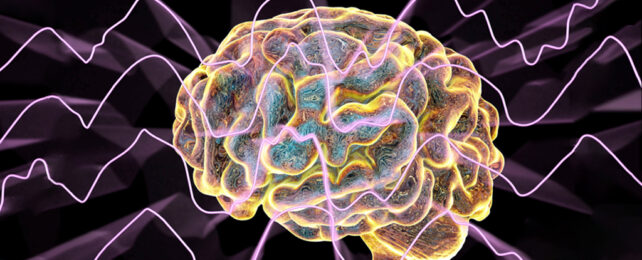Our squishy gray matter conducts its activities through an orchestra of waves. With many tasks operating in tandem, how our brain keeps distinct oscillations from tangling has long been a puzzle.
Now US researchers have found the direction of traveling brain waves align with their type of task, with learning processes flowing one way and recall actions bouncing back the other direction.
"These findings… help us better understand how the brain supports a wide range of behaviors that involve precisely coordinated interactions between brain regions," explains US National Institutes of Health neurologist Uma Mohan.
The study recruited 93 patients from hospitals across the US who already had electrodes implanted temporarily on the surfaces of their cerebral cortex for drug-resistant epilepsy treatment, giving researchers access to what's usually out of reach.
"It's a rare opportunity to be able to see what's going on directly from the brain while the participants are engaged in different cognitive behaviors," says Mohan.
The cortex is our brain's outermost layer, involved in consciousness and associated behaviors, like attention and thoughts.
Mohan and colleagues recorded theta (2–8 Hz) and alpha (8–13 Hz) frequency waves flowing across the brain's surface while the volunteers performed different tasks. One set of these behaviors involved memorizing lists of words or letters; the other set was about recalling them.
"We're looking at neural oscillations not as independent stationary things but as things that are constantly and spontaneously moving across the brain in a dynamic way," observes Mohan.
It took some effort, and the latest technology, to sort through the diversity of signal dances between individuals and resolve a pattern. In the study, 67 additional participants had brain waves that were not prominent enough to analyze during the memory task.
The wide array of differences is likely due to anatomical and physiological differences between individuals, and may be why the directionalities were missed previously, the team notes.
"We found that waves tended to move from the back of the brain to the front while patients were putting something into their memory," explains Mohan.
This frontal lobe is the brain area that lights up the most when we're forming internal context.
"When patients were later searching to recall the same information, those waves moved in the opposite direction, from the front towards the back of the brain," Mohan continues.
We still don't understand if these signals drive the activity they're associated with, or are a byproduct of it. But these traveling brain waves are thought, at the very least, to help choreograph the order and timing of activities across the different brain regions.
The new research goes some way towards supporting this theory.
The wave oscillations match the level of neuron activity giving us a visual insight of how such cellular communications flow through our brains in discrete pulses. The brain waves' direction changes could be involved in reorganizing this connectivity.
As we learn more, we may find new ways to help people struggling with conditions like memory loss.
"If someone's waves are moving in the wrong direction when they're about to try to remember something, that might put them in a poor memory state," says Mohan. "If you could apply stimulation in the right way, you could maybe push those waves to move in a different direction, bringing about a fundamentally different memory state."
While most of us can get away with using our brains without having a clue as to how they work, there's still so much to learn for when things go wrong. Luckily, neuroscientists are learning the brain's dance moves.
This research was published in Nature Human Behavior.
